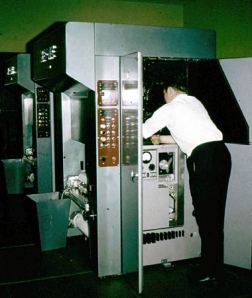I don’t know what Kathy was talking about a few posts back: everything that I do is sexy — not least of which is data entry. One of the truly fun things for me as I went along, transferring data from the paper site forms to the digital database, was that I got to relive my field experiences from 2008, and even, on occasion, learn about new Munsell soil colors that I didn’t even know existed.
Well, so “10.5YR” probably wasn’t the intended hue in the Munsell system, and it remains a mystery as to what the recorder actually meant by it in reference to the color of the soil matrix in a certain stratigraphic unit (SU). Apart from that peculiar situation, however, I have been able to clear up various scribal errors encountered along the way (“sandy day loam” might be a good name for a cosmetic) and, in doing, call back to memory many a scene at Pyla-Vigla. Now we are finishing up the 2009 data, but it was fun to visit a bit with those forms before they move on down to the ol’ genizah. Actually, if I understand correctly, they might be making their home in the UND Chester Fritz Library‘s special collections.
Speaking of the good ol’ CFL, Dr. Caraher recently gave a talk there about archaeology, inter/trans/cross/post-disciplinary “synergy“, and the implications of the “New Media“. For me, at my vantage point as a MA student, much of the “new world” that Bill is heralding is hardly odd or novel to me. Sure, some of this is a function of my proximity to Bill, but I was already becoming acculturated into this world before I even met Bill Caraher. I am really no more tech-savvy than my colleagues, Sara and Kathy, but I have not known archaeology prior to the use of computers for data recording, storing, and processing. Sure, I wasn’t necessarily the one “doing” it, but digital media was always a companion, even in the gritty, windswept wastes and sage-choked gullies of North Dakota.
Sure, back in the day, they didn’t have computers. I get that. I even have some idea of how they did archaeology in the absence of digital technology.
But I didn’t think, at the time, that it needed any more persuasive explanation than what could be given for any other tool in the archaeologist’s methodological toolbox. As an educated member of the “Millennium Generation”, my response to the question of whether or not there could be a beneficial rapprochement between scholarship and digital technology would have been something along the lines of:
duh!
But, for all of the audience members who might still have been wrapping their minds around the idea of such a rapprochement (I doubt that any current faculty members actually were), that wasn’t the point of Bill’s talk, per se.
To be honest, I paused for quite a while after typing that last sentence. Since then, both Bill and I have attended panel discussions on the already decades-old “new media” at the UND Writers Conference featuring such artists and luminaries as Stuart Moulthrop, Mark Amerika, Scott T Miller, Deena Larsen, Cecelia Condit, Frank X Walker, Saul Williams and Art Spiegelman. Bill has shared his musings on the conference presentations, here. (I attended the same panels as he did.)
I get what the hubbub is about. I’m just having a hard time mustering the patience to join the hubbub for any length of time. Yep, it’s crazy. I can write an article on this website which people can read on their telephones next door and in Singapore — at the same time.
Crazy.
OK, moving on …
As relatively “at home” as I am with this medium, it really comes more easily to Kathy to notice and to articulate the peculiarities of it. Even Bill has to work harder, I think, although he makes up for it in the time and energy which he has put into considering the matter over the years. I’m pretty sure that Homi Bhabha wrote something about this phenomenon somewhere. In effect, Sara and I are more indigenous to this “culture”, that is, this collection of signs. Oddly enough, even though I had no real experience with the internet prior to my freshman year at the university, I have still taken to it quite readily. I was eased into it in many ways. It expanded on and synthesized many other languages to which I had already been exposed. All I needed was an occasion to “speak” the language, and its relationship to the other languages already conditioned me to find occasions and to seize on them without waiting to puzzle over them.
We are all multilingual, even if we do not think of it in those terms. And, as with conventional languages, there aren’t really hard-and-fast boundaries between languages more broadly considered, despite attempts to demarcate and to standardize. I learned to write with a pencil and with crayons. I first encountered language as sound filtered through the flesh of my mother’s belly, and I have no recollection of when I first recognized that sound as being related to a conscious effort to communicate thought. I’m pretty sure that I was more concerned with my physical dependency on a world external to myself to keep my body from protesting at the lack of nourishment. If I had to guess, I would guess that my earliest cognisance of language was tied to that very practical concern.
And so began my adventure in semiotics.
(I know that it is considered to be bad style in English written composition to begin sentences with conjunctions.)
(But I’m blogging, baby!)
As fun as metanarrative can be, however, it is also a good way slip into the pond and completely lose one’s train of thought. I had hoped to write something profound about the synergistic possibilities of the “new media”, but I got bored and a bit perplexed with all of the new media hullabaloo and I still have a hard time not thinking in terms of synergistic research. Can someone please help me? I’m not really Miranda in this story, nor am I Caliban, nor am I the castaways. To use one of Kathy’s favorite concepts, I’m not hubristic enough to claim to be Prospero. Maybe I am one of the spirits, the cultural hybrids. Publishing and the new media, peer-review and the new media, authority and the new media, class and the new media, professionalism and the new media, profit and the new media … I get it, I think. Perhaps it is the perceived rigidity of these older concepts which constitutes the “brave new [old] world” for me.
Maybe I am Miranda.
Miranda: … O brave new world that has such people in’t!
Prospero: ‘Tis new to thee.
William Shakespeare, The Tempest; Act V, scene I.
PS: I think that there is one point, at the very least, which ought to be clarified. The “sandy day loam” was a typo and that means that it was typed and that, in turn, means that there has been another step in this process — other elves at work — besides the steps with which the UND spring 2010 team have been involved. At least one of Dr. Pettigrew’s students at Messiah College in Grantham, PA has done some work in preparing the PKAP data from 2008-2009, most notably by transposing the prose portions of most of the site reports onto a Word document. This has been of immense help to Sara and myself.





 Posted by Chris
Posted by Chris 


